What’s the first thing that comes to mind when you hear about contemplation? Religion, yoga, or mindfulness? As a thinking activity that can reshape the brain and change the ideology, contemplation is at the intersection of cognitive science, human psychology, and cultural psychiatry. Nowadays, contemplation has been gradually separated from religion and increasingly recognized as a healthy training for human both physically and mentally.
High on the evolutionary tree, human beings have obvious socialization characteristics, and human experience is affected by multiple interactions. On February 25 (Beijing time), the Contemplative Science Summit and Community Gathering, jointly organized by the Tianqiao and Chrissy Chen Institute (TCCI) and the University of California, Davis (UC Davis), was held. During Symposium 2, three scholars from the field of contemplative science explored contemplative practices from the dimensions of eliminating bias in scientific research, neural encoding mechanisms behind language models, and socio-cultural contexts of contemplation.
01 Restoring the élan vital of research: Principles and practices of inclusive, anti-racist science
Kamilah Majied, Ph.D., California State University, Monterey Bay
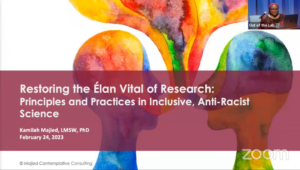
Dr. Kamilah Majied from California State University, Monterey Bay, made a clear statement against racism and immigrant discrimination at the conference. In this symposium, she talked about how to utilize contemplative practices to assess and eliminate bias in scientific research in different social contexts.
At the beginning, Dr. Majied used a light-hearted contemplative exercise to bring herself closer to the audience and create a relaxed and joyful atmosphere for the symposium. Dr. Majied argued that it is beneficial to pause when we are in an emotionally and cognitively difficult moment. Such pauses will create surprises and serves as a buffer for unconscious biases.
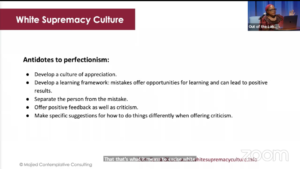
Dr. Majied described her own passion for resisting white supremacy culture and her expectations that people will explore science and the world fully and freely. She prescribed her own antidotes in terms of a culture of appreciation, a framework for learning, and positive feedback as well as criticism. She argues that haste breeds discrimination, while momentary cease leaves space for sanity. White supremacy in science and education should be ignored rather than being a hindrance to the road forward. Language, as a vehicle of culture, allows for authentic and holistic communication and should be an effective practice against racism.
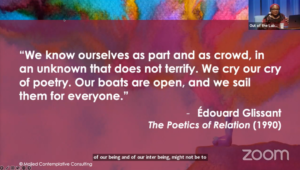
“Let thoughts flow freely and words turn into poetry to nourish our hearts and minds. It delights the wise to create a better world with all.” Towards the end of his talk, Dr. Majied engaged the audience in a fill-in-the-blank interaction, where everyone was free to articulate their thoughts. While prejudice and discrimination is a heavy topic, Dr. Majied took a transcendental approach to address existing problems and offered viable solutions in conjunction with the contemplative science.
02 Can deep language models serve as a cognitive model for natural language processing in the human brain?
Uri Hasson, Ph.D., Princeton University
Dr. Uri Hasson from Princeton University talked about the neural processes of natural language processing and shared the computational rules shared by neural encoding and deep language models.
Dr. Hasson pointed out that research subjects in the lab usually cannot be used as references for real-life scenarios, and the deep language model he initially constructed has been proven to fail in multi-scenario validation. He has conducted a series of explorations ever since to construct a model in recent years that is close to language processing in the natural state of the human brain.
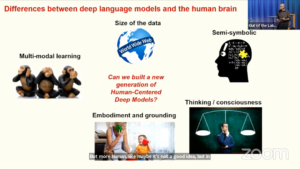
However, current deep language models still have shortcomings, such as the lack of advanced planning and the limitation that the language learning process is carried out by observing word-to-word connections. These flaws indicate that such models are still greatly different from the human brain.
This topic is naturally associated with ChatGPT, the immensely popular large language model launched recently, which leads to an interesting question: how many computational laws are shared between ChatGPT and the human brain in terms of language processing?
03 Contemplative practice in context: A cultural-ecosocial approach
Laurence Kirmayer, M.D., McGill University
Dr. Laurence Kirmayer from McGill University, USA, discussed the cultural shaping mechanisms involved in contemplative practices and reflected on contemplative science under social, cultural, and political contexts.
Dr. Kirmayer argued that the subject of contemplative science consists of four parts: trainings, processes, goals, and results, of which contemplative trainings can take many forms depending on cultural diversities.
The social sciences provide contemplative trainings based on specific social contexts, and contemplation in turn can help individuals recognize the dynamics of social systems. The continuation of human society is not only dependent on our brains, but also our interactions with the environment.
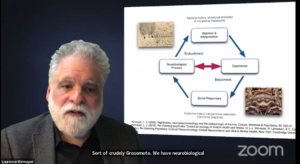
Contemplative thinking changes dynamically from context to context. And in the encoding process of daily attention, the interactions of self-consciousness, consciousness of others, illusions, and subconsciousness are maneuvering our mental worlds. Neuroscientists are constantly interpreting the biological process behind it, but it is indisputable that its carrier is the very continuation of the physical body and culture.
Contemplation does not exist in isolation but intertwine with specific historical and social contexts to reveal its uniqueness. Dr. Kirmayer demonstrated the connotations of contemplation in specific contexts from multiple dimensions. Finally, he advocated that the study of the contemplative science should be an integral part of a cultural system, with an eye on changes caused by political shifts.
Though the three speakers presented around the same topic of contemplation, each took on different perspectives including bias in science and culture and specific cultural contexts, which unveiled the true beauty of contemplation. The neural mechanism of language encoding is a unique perspective to rationally analyze the biological basis of contemplation. We aspire to demystify contemplation and usher it into the scientific realm in the form of mindfulness for the benefit of all mankind.